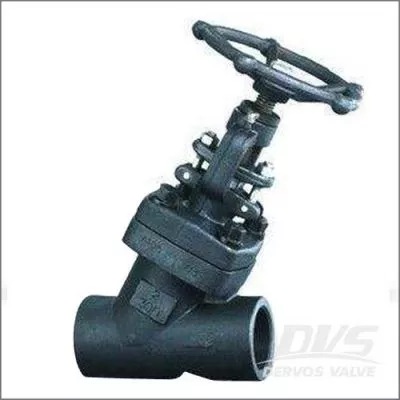Basic information concerning forged valve corrosion
Forged steel valves and other valve products are characterized by high temperature and pressure resistance, unique self-sealing design, the higher the pressure, the more reliable the seal. Due to the special performance, technical characteristics and working conditions, the product has formed the characteristics that cannot be replaced by other products.
The corrosion of the valve is usually understood as the damage of the valve metal subjected to chemical or electrochemical environment. Because of the "corrosion" phenomenon seen in the metal's spontaneous interaction with the surrounding environment, how isolated or more of the metal and the surrounding environment using a nonmetallic composite material, is the focus of corrosion. The valve body ( including the cover, also called bonnet ), plays a great important role in the valve use, and is in regular contact with the media, so the selection of the valves often proceed from the valve body material.
Valve body corrosion has two forms, namely, chemical corrosion and electrochemical corrosion. Its corrosion rate is determined by the medium temperature, pressure, chemical properties and corrosion resistance of the valve body material. The corrosion rate can be divided into six such as :
I. Complete resistance etches : Corrosion speed lower than 0.001 mm / years ;
II. High resistance etches: Corrosion speed from 0.001 to 0.01 mm / years;
III. Common Resistance etches: Corrosion speed from 0.01 to 0.1 mm / years;
IV. Low resistance etch: Corrosion speed from 0.1 to 1.0 mm / years;
V. Poor resistance etches: Corrosion speed from 1.0 to 10 mm / years;
VI. No resistance etches: Corrosion speed higher than 10 mm / years.
How to prevent the corrosion of the valve?
Anti-Corrosion of the valve body mainly relies on the correct selection of materials. Although the information about anti-corrosion is very rich, it is not a easy thing to select a appropriate body material. The corrosion problem is complex, for example sulfuric acid in low concentration creates high corrosion to steel; the steel under high concentration produces passivation film, which is of anti-corrosion; hydrogen only in high temperature and high pressure displays strong corrosion to steel; chlorine has no corrosion performance in dry state, hence the strong corrosion performance is only created under circumstances of humidity, with no many material appropriate. The material selection of the valve body is a very difficult issue, concerning not only the consideration about the corrosion problems, but also taking into account the pressure and temperature capacity, as well as the economic effect.
I. Followed by lining measures such as lead lining, aluminum lining, plastic lining and natural rubber, synthetic rubber lining, etc. This is a saving method when media conditions permit.
II. Again, in the case of medium and low pressure and temperature, using fluorine material producing a valve body is often very effective to prevent corrosion.
III. In addition, the outer surface of the valve body is affected by the atmospheric corrosion, so general steel materials must be painted for protection.
